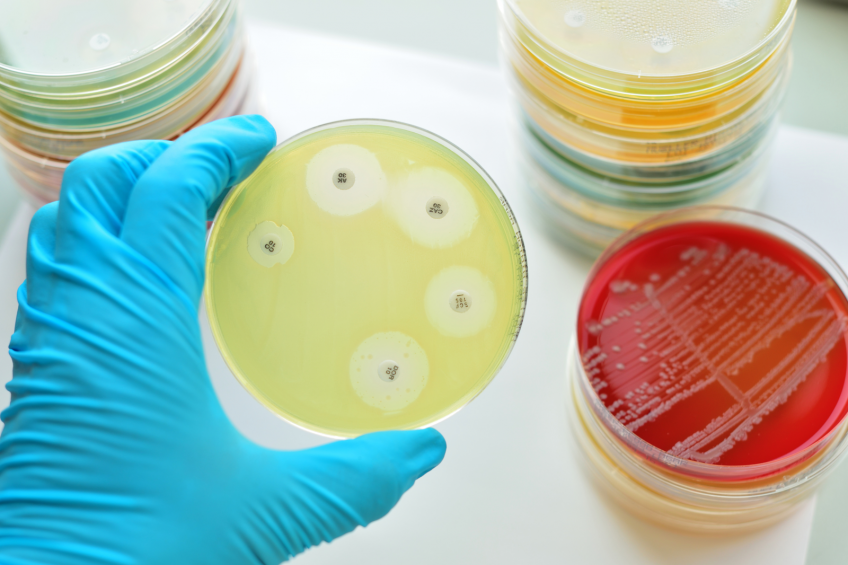Superbug poses risk for workers and consumers

A Danish study shows that a novel strain of Methicillin-Resistant Staphylococcus Aureus (MRSA) may spread to humans through handling or consumption of contaminated poultry meat.
When a group of researchers of Milken Institute SPH, the Statens Serum Institut in Copenhagen, Denmark, and the Translational Genomics Research Institute in Flagstaff led a study which investigated the evolution and epidemology of a novel livestock-associated MRSA strain this year, they found that the strain colonises and infects humans without an animal reservoir. The researchers showed with this study, which was published in the journal Clinical Infectious Diseases, that poultry and poultry meat is a possible source of human exposure to MRSA. People in urban areas, who had not been exposed to livestock are becoming infected with poultry associated MRSA via meat.
MRSA
Methicillin-Resistant Staphylococcus Aureus is a type of staph bacteria that is resistant to many antibiotics. In healthcare institutes such as hospitals and nursing homes MRSA is capable of causing serious problems such as bloodstream and surgical site infections and pneumonia. It can even lead to death. A MRSA infection does not go unnoticed. Colonisation without infection can go unnoticed though. Staph is a natural part of the nasal bacteria flora in 30% of all humans.
“There are many different MRSA strains,” says study leader Dr Robert Skov. “These can be hospital or healthcare associated, community associated or livestock associated. The specific strain of MRSA the study focused on is a newly identified strain associated with poultry. This strain is adapted to both humans and poultry. MRSA is in some countries often found in poultry and other food production animals. Farmers, veterinarians and other humans who work directly with livestock have an increased risk of getting infected with MRSA. This has been a known fact for several years. However, this study at Statens Serum Institut showed that people who had not been exposed to poultry or other livestock are also becoming colonised and infected with this particular new strain of poultry associated MRSA. “The findings of our study implicate handling and consuming contaminated poultry meat as a source of infections,” says Skov. “As this strain is adapted to both humans and poultry it may be more capable of transmitting from food to people. MRSA continues to evolve and this is why it may find new ways to spread from animals to humans.”
Genetic analysis
The researchers reviewed the Danish national MRSA database for laboratory findings of all MRSA isolates which were collected from 1999 to 2015. Skov and his fellow researchers used a type of sophisticated genetic analysis to study the MRSA from these cases. They also compared it to strains which were found in people, livestock and food products from other European countries. “For comparative purposes we obtained 110 isolates from different laboratories across Europe. We screened genomes for specific genes. We found 10 people living in urban areas of Denmark, and two mink farmers that had been colonised or – there were only a few – had infections with this particular MRSA type.”
Of these 10 Danes living in urban areas who were infected with this novel strain of poultry associated MRSA, none had worked on farms or had been directly exposed to food animals. “These cases were intriguing, because this genotype had never been detected in Danish livestock and epidemiologic investigations showed that none of the 10 urban cases had direct livestock exposure. The particular strain of poultry associated MRSA was however not found in Danish livestock. But it could be traced to poultry meat imported from other European Union countries.”

Human to human transmission
Isolates of the newly identified strain were very closely related to strains found in poultry in other countries. As stated this strain has not been found in Danish livestock thus 2 scenarios for transmission seem plausible. “Foodborne or human-to-human transmission,” says Skov. “There is documentation of the presence of the MRSA strain in meat products in other European Union countries but sold in Denmark. This leads us to believe that Danes have been frequently exposed to this pathogen through consumption or handling contaminated food products. Previous reports show that transmissions of the MRSA strain did occur from livestock workers to their family members. While in hospital and community settings person to person transmission is common, such transmission in general requires close contact. And as this is never found in Danish livestock and we have cases spread over a period of years this makes this route less plausible. This is why we believe that human to human transmission is less likely to be the source of the other urban cases from the study. As none of them had contact with livestock workers or had a history of travelling to areas where the MRSA strain is endemic in livestock.”
Future of MRSA in livestock unpredictable
Interestingly enough the research team and others have shown that livestock MRSA strains are very versatile organisms. They have proven readily adaptable to a range of species and humans. “This makes the future of MRSA in livestock unpredictable. This is why it is very important to continue surveillance at the human-animal interface.”
Dr Skov can’t say how widely spread the strain is. “There is very little surveillance on how many of the livestock is contaminated. After all, only very few of the contaminated animals are actually ill and even less are genetically examined to see if this particular type is present. It takes extensive surveillance and testing to find this particular sub strain. There are other strains present in poultry, and based on what we know this is not the most common type. However, this specific hybrid strain is found in several European countries. In contrast to Denmark, the MRSA strain has been isolated from pigs, cattle, poultry, and retail foods in other European countries, including France, Germany, Italy and the Netherlands. We do know that livestock associated MRSA strains are to a large extent only found in cases where one fosters livestock. The strains weren’t found in large cities such as Amsterdam or Paris, but they were found in rural places. This implies that food is actually a minor source of transmission.” This limits the risk. The risk is very small and can be almost completely avoided if people take care of kitchen hygiene. “We can at least seriously lower the risk with basic kitchen hygiene. Don’t touch your nose when you touched meat, don’t cut your vegetables with the same knife you cut raw meat with, thoroughly cook your meat, etcetera,” summarises Dr Skov.
Reducing antibiotics
Even though meat products represent only a minor transmission route for MRSA to humans, the findings of the Danish research team nevertheless does underscore the importance of reducing the use of antibiotics in food producing animals. Preventive antibiotics administration has led to the rising tide of superbugs such as the new strain of MRSA. “I think it is important to always use as little antibiotics as needed, and only supply it when it is really necessary”, emphasises Skov. “This will diminish the risk of creating resistance among pathogens.”
Dr Skov does wish to add nuance to the severity of the problem. “Basically we are talking about 10 cases in a time frame of 10 years. This strain is not very common. But it is a proof of concept which implicates we do need to keep on having good surveillance. So we do need to continue surveillance of the animal – food – human interface. Food inspectors do not typically test poultry and other food groups for MRSA contamination. Instead they are focused on Salmonella and other more typical foodborne pathogens.” Skov adds: “If we don’t get antibiotic use in livestock under control, then new strains of livestock-associated MRSA may occur.”
In dealing with this matter authorities and representatives of the industry ought to work together. As this MRSA strain and other bacteria have no respect for political boundaries and borderlines parties from different countries should join forces in order to handle the superbug. “If we don’t get antibiotics use under control more new strains of livestock-associated MRSA will emerge that pose a greater threat to human health than what we are currently facing.”
A natural phenomena
Since antibiotics were first used in the 1940s bacteria became resistant to the medicine. The mechanism involved in antibiotics make resistance a natural phenomenon. The medicines kill the susceptible bugs and create an environment where the unsusceptible bugs can thrive. This mechanism wasn’t a problem for years, because there has always been a pool of ‘other’ antibiotics as a fall back alternative. However, due to overuse and misuse, the bugs evolved faster than antibiotics and humanity has run out of options to treat diseases. Especially the rise of the so called superbugs, multi resistant bacteria, pose a real threat. As many as 50,000 people per year are already dying from bugs that were treatable in the past.
The sources of resistance are multiple, from natural, to human, all the way to animal husbandry and poor wastewater treatment. Reducing antibiotic resistance is a task in which every sector should take its own path of action. The World Health Organization concluded that inappropriate use of antibiotics in animal husbandry is an underlying contributor to the emergence and spread of antibiotic-resistant germs, and that the use of antibiotics as growth promoters in animal feeds should be restricted. The World Organisation for Animal Health has added to the Terrestrial Animal Health Code a series of guidelines with recommendations to its members for the creation and harmonisation of national antimicrobial resistance surveillance and monitoring programmes, monitoring of the quantities of antibiotics used in animal husbandry, and recommendations to ensure the proper and prudent use of antibiotic substances. Another guideline is to implement methodologies that help to establish associated risk factors and assess the risk of antibiotic resistance.
This article was published in World Poultry 2016-9, for more articles from this issues see our digital section.












